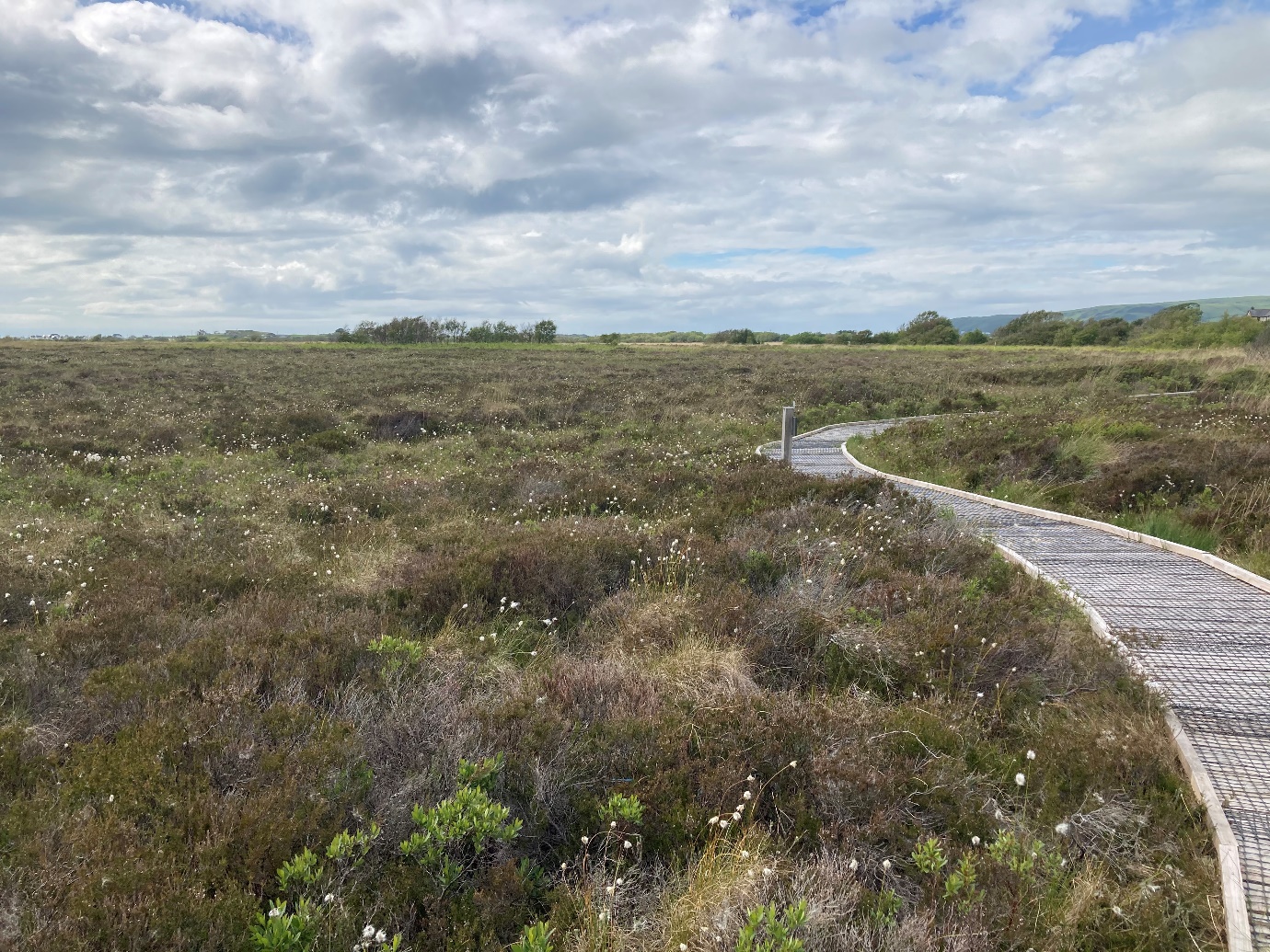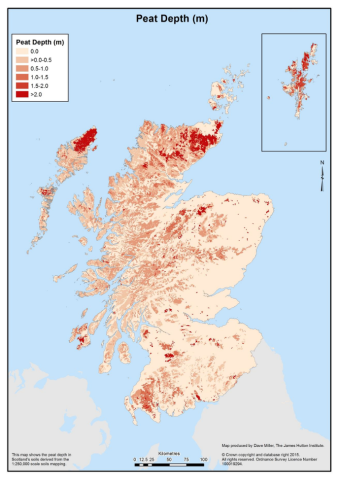If you have ever hiked in Scotland, you will be familiar with that sinking sensation. You step onto a lush bed of green only to be sucked in ankle deep by a squelch of bog. Most likely this is the same point at which you realise that your boots are not as waterproof as they used to be! The next time you find yourself cursing the name of Scotland with your wet feet and head in a cloud of midges, here is something to think about: it is estimated that restoring 55% of peatlands to near natural conditions will have a net benefit of £45 - 51 billion. Billions of pounds sound like a lot of money, so let's wade through this bog together and untangle what this really means.

A shot of Cors Fochno, a protected raised bog in Wales that I visited this summer (Credit, C Harris).
Peatlands are wetland ecosystems that are made up of partially decomposed material. There is so much water in peatlands, especially those in good condition, it slows down the decomposition of animal and plant matter to gradually form layers of peat. Healthy peat bogs host a unique range of animals and plants and are characterised by their lush green topping of Sphagnum moss. Sphagnum is a superhero of the plant world, holding up to 20 times its own weight in water! Over 20% of Scotland is covered in peat and this provides us with many benefits, including filtering our drinking water. Perhaps most relevant to COP26, peatlands store carbon by accumulating plant material and in Scotland this is estimated to be 140 years' worth of our total greenhouse gas emissions. Unfortunately, peat has historically been harvested for fuel and other uses, like our garden compost, and drained for conversion to agricultural land and forestry. It is now estimated that 80% of our Scottish peatlands are damaged, which turns them from a sink to a significant source of carbon emissions. As a result, the Committee on Climate Change has set a target for restoring 55% of UK peatlands to near natural conditions by 2050.
Among the many excellent reasons to restore peatlands, carbon storage is what we will take into our next layer of deep peat exploration. The UK government puts a value on carbon so that different policies and mitigation strategies can be compared in economic terms. There are many ways to price carbon, including modelling the costs to society, or economic damage, from emitting a tonne of carbon dioxide. The UK has switched to a "target-consistent" approach, which means we estimate the price for carbon based on how quickly we wish to reach net zero emissions and what our desired emission pathway to follow is. These costs are continually updated based on the latest information and there is much debate over how carbon should be priced so that we can best reach our climate targets of net zero by 2050.

For now, let's assume carbon has its price and now we need to know the other side of the coin: how much are peatland areas currently emitting and how much less would they emit if 55% were restored? Figures on how much CO2 and other greenhouse gases are emitted from different land types are calculated in an emissions inventory for UK peatlands, which span from net negative emissions in near natural bogs all the way through to heavily emitting peatland converted for crops or forest. We can then virtually "convert" different portions of peatlands to a near natural state and calculate the cost of restoration versus the value in terms of reduced carbon emissions. Exactly which 55% we restore is up for debate and this leads us to a range of scenarios by restoring peatlands with different types of land uses. The Office for National Statistics (ONS), who produced these figures, ranked the land use types based on the highest cost: value ratios and took the top 55%. This led them to an estimate of 12 mega tonnes of net CO2 emissions reduced per year, with a value of £45 - 51 billion depending on how conservative our estimates of restoration costs are.
Throughout this process there are many assumptions we need to make to reach our figure of the net benefit of restoring peatlands. For example, emissions figures for different land types are based on estimates from field studies, for which there are limitations in the amount of data available. The entire process of valuing natural resources like peatlands relies upon conservation experts, statisticians, modellers and economists and must be regularly updated based on the latest data and targets. Despite how we choose to do this, one thing is for certain: our peatlands are highly valuable in their own right and in terms of the biodiversity they host, the carbon they store, the natural cycles they regulate and the recreation they provide. Whilst one blog post will never be enough to dig deep enough into this complex topic, I hope this has convinced you that bogs are indeed brilliant and restoring them will be critical for a brighter climate future.
References:
The full report may be found at the Office of National Statistics
More information on restoration efforts across Scotland can be found at Peatland Action

